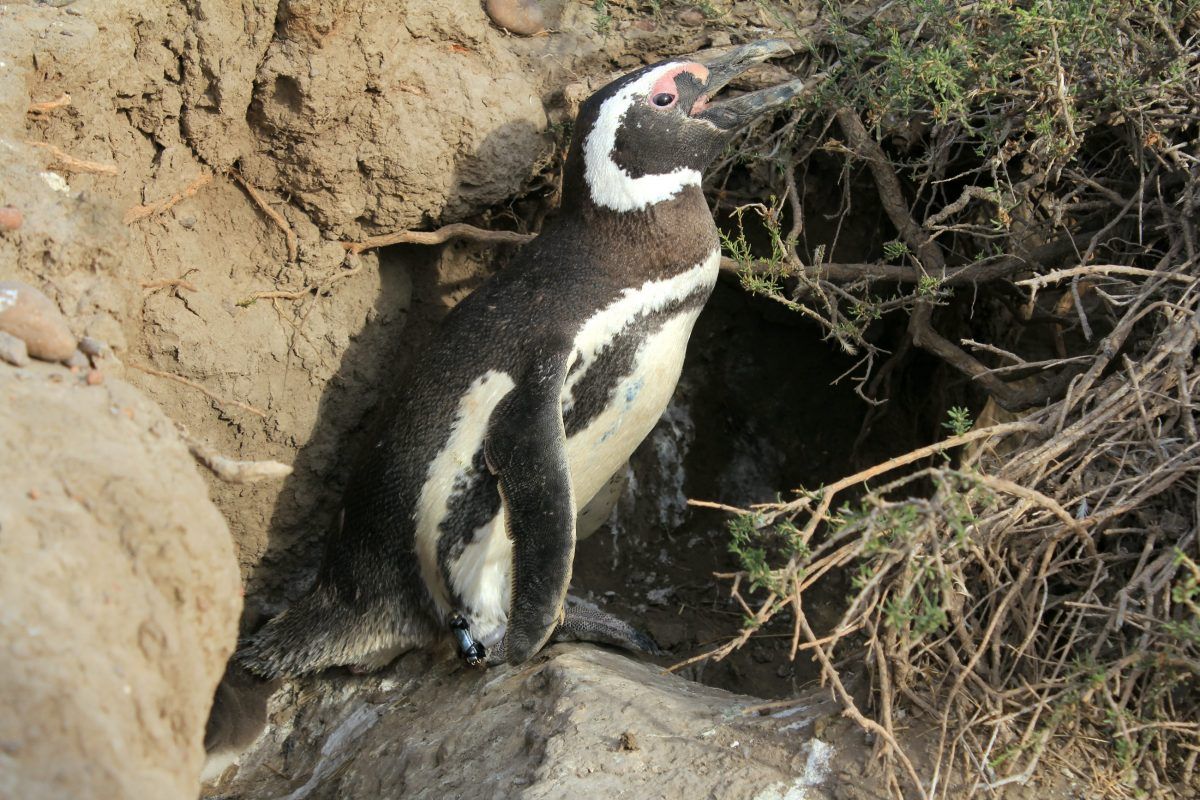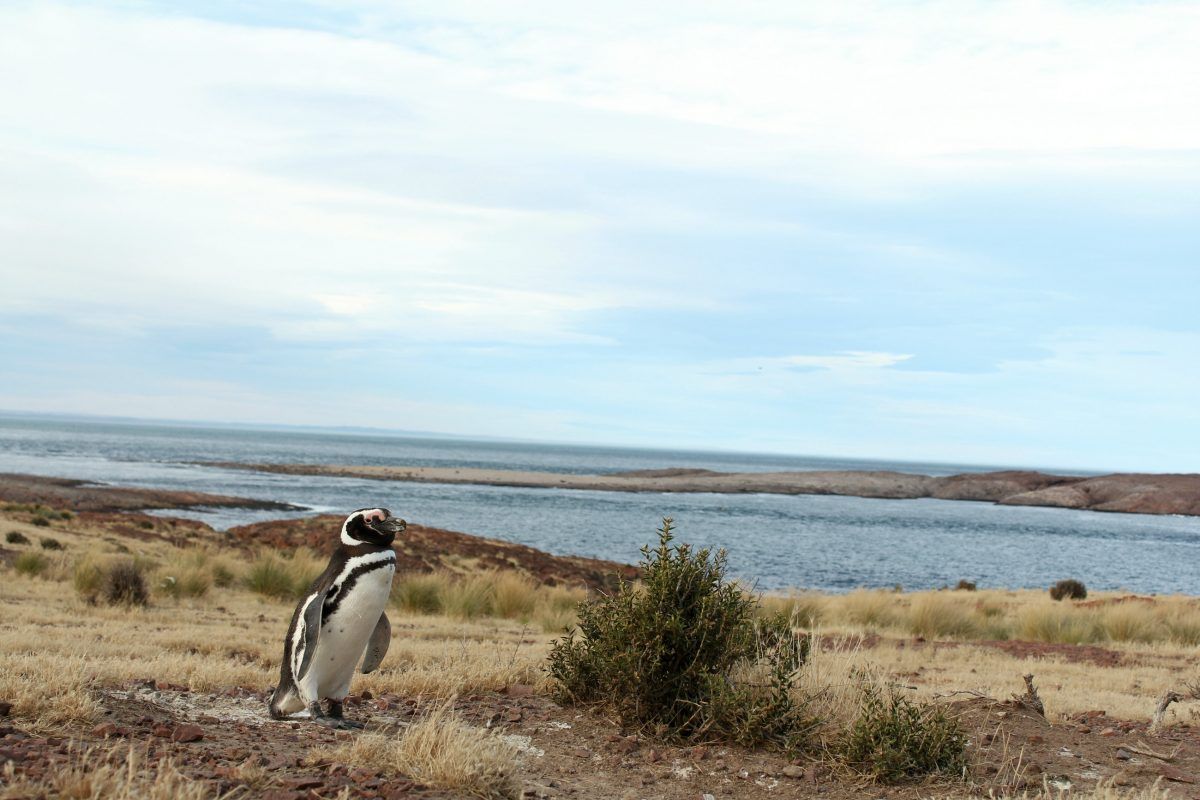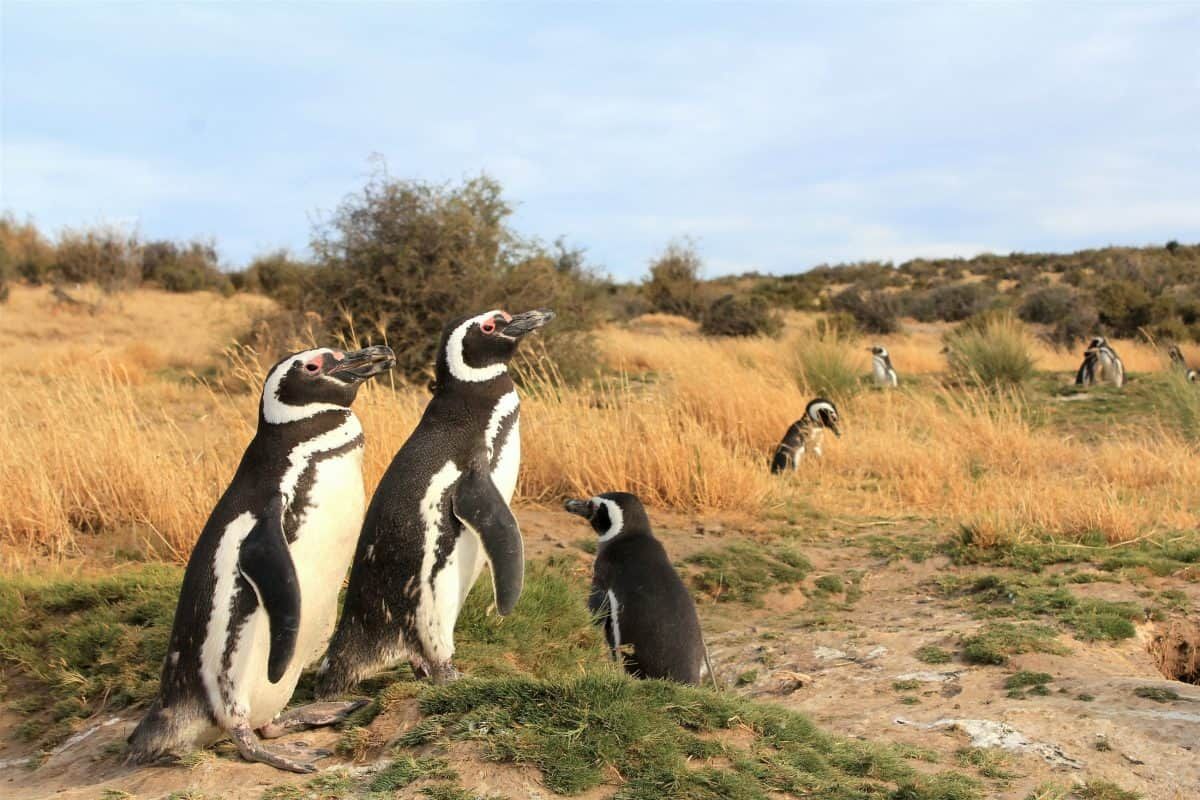Penguins split from their partners for winter – but still remain faithful, according to new research.
Scientists say a breed of penguins found on the coast of South America are among the most faithful couples in the animal kingdom – despite spending months apart each year.
The phenomenon was revealed after a study discovered why stranded Magellanic penguins are much more likely to be female.
It is because they travel further from their Patagonian breeding ground in southern Argentina to the northern coast of the country – and that of southern Brazil.
This takes them 620 miles away where they are more likely to run into trouble – leaving most of the males behind.
The discovery, published in the journal Current Biology, sheds fresh light on the extraordinary lifestyle of the species – also commonly found around the Falkland islands.
They are one of the most abundant but poorly-understood flightless birds on the planet.
Every year thousands become trapped through oil spills and falling fish numbers – with females three times more prone.
And the reason is simple – they venture farther north than males where they face more potential trouble.
Dr Takashi Yamamoto, of the Institute of Statistical Mathematics in Tokyo, Japan, said: “Anthropogenic threats have been considered to threaten wintering Magellanic penguins along the coasts of northern Argentina, Uruguay and southern Brazil.
“These include water pollution caused by oil development and marine transport as well as fishery-associated hazards such as bycatch and depletion of prey species.
“Our results suggest the northward spatial expansion likely increases the probability to suffer these risks – and particularly so in females.”
While data were lacking there wasn’t any evidence to suggest males and females separate for the winter.

Now Dr Yamamoto and his colleagues have found they really do through recording the migratory and diving behaviour of 14 Magellanic penguins.
They followed eight males and six females during the non-breeding season in 2017 by fitting tiny geolocators to their legs to see where they go.
The penguins finished breeding in late February. Afterwards they began their migration through April – returning to the grounds in September or October.
During the wintering period the tracking devices showed females reached more northern areas than males did.
There were also other gender differences – such as females not diving as deep under the water.
The researchers said these behavioral differences between sexes in winter could be related to competition for food resources or factors related to differences in size.
Males are larger and heavier than females. They also suggest penguins travelling further north may be at greater risk to a wide range of threats – leading them to become stranded more often.
But the greater loss of females from the breeding population could have serious consequences for the viability of the population.
Dr Yamamoto says the it highlights “the necessity of gaining a better understanding of the long-term spatial utilisations of species throughout their annual cycle.”
This includes any differences within a population in order to “facilitate dynamic and adaptive conservation practices.”
He also notes juveniles are stranded more often than adults. To further explore this his team plan to track their movements from the time they leave the place of their birth until they return to breed for the first time.
He said: “Information during this period is totally missing.”

Magellanic penguins can travel up to 10,000 miles a year in their search for food – and love.
Recent research found one couple have remained faithful to each other for 16 years – almost their entire breeding life – despite each of them taking solo trips totalling 200,000 miles. Each year they have returned to the same nest – and each other – to produce a new brood of chicks.
The penguin’s natural lifespan means they normally die around 20 years after they start breeding.
Chicks are often killed by predators or hunger. Only if a couple fails to successfully hatch their chicks will they ‘divorce’ – leaving each other to find new partners.
They live, sleep and eat on the waves for up to six months clocking up around 10,000 miles before returning in the spring to their old nest – and the same partner.
Magellanic penguins usually begin to breed from around the age of five years old for females and seven years old for males.

The penguins arrive at their nesting sites in September – spring in the southern hemisphere – and find their partners among the 100,000-strong colony by the distinctive sound of one another’s calls.
Once reunited at their old nest the birds groom each other to re-establish their bond.
After mating, the female typically lays two eggs.
The parents take turns standing over the eggs while the other partner goes out to sea, swimming up to 100 miles a day in search of the fish and squid they feed on.
Numbers of Magellanic penguins have dropped dramatically since the turn of the century with some colonies halving in the past 15 years. There are thought to be around 1.2 million left in the world.
By Mark Waghorn

